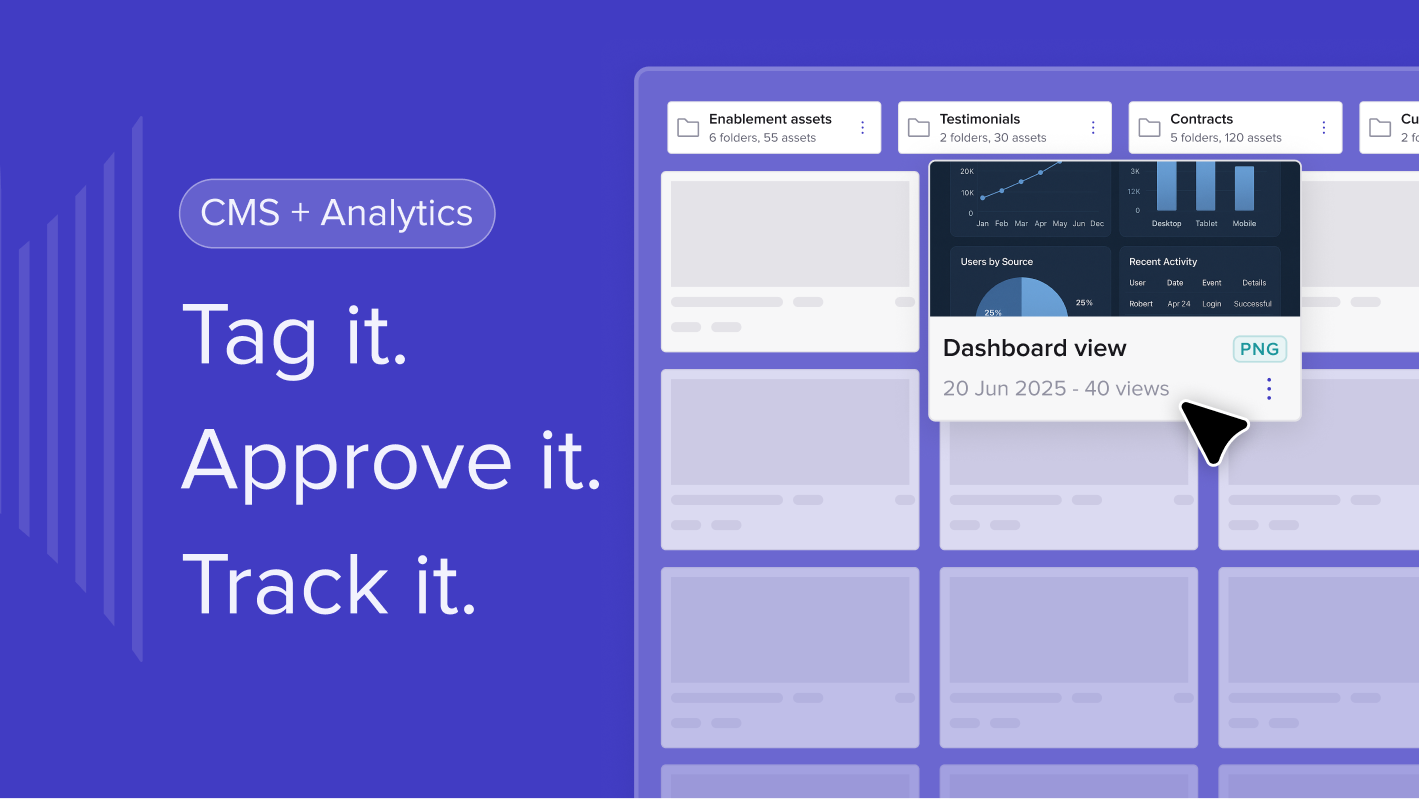Key takeaways
Mutual Action Plans (MAPs) align buyers and sellers to co-own the path to purchase. Done right, they shorten B2B sales cycles, increase win rates, and build trust. trumpet Pods include a built-in MAP to make closing deals smoother and faster.

What's the secret to closing B2B deals? The answer: let the buyer close it themselves. That's the genius behind mutual action plans (MAPs). Rather than giving the buyer the hard sell to slowly convince them to purchase your product or service, you work together to develop a plan that benefits both parties.
Sounds too good to be true, right?
B2B sellers have become so accustomed to the gruelling slog of difficult sales we assume it's normal. What we don't realise is that the feeling is mutual! In one survey of 250 B2B customers, 77% rated their last purchasing experience as "extremely complex or difficult."
Using a mutual action plan for sales success is so obvious we can't believe it's not a bigger deal! Every Trumpet auto-personalised digital sales room includes a MAP as part of the conversion funnel.
Interested? Look no further; we cover everything you need to know about this potent sales technique, including what it is, how it works, and how to get started – we've even thrown in a mutual action plan template.
In this guide:
- What is a Mutual Action Plan?
- Why Mutual Action Plans Work
- How to Create an Effective Mutual Action Plan
- Mutual Action Plan Template

What is a Mutual Action Plan?
You can expect a MAP to include:
- Objectives and Goals: Define the mutual objectives and the desired outcomes
- Responsibilities and Roles: Identify each stakeholder's role and what they're accountable for
- Timelines and Deadlines: Set clear timeframes for each action and overall project completion
- Resource Allocation: Specify any resources (human, financial, material) required and who provides them
- Review and Communication Plan: Establish how often stakeholders will meet to review progress and how they'll communicate
Your MAP keeps evolving as the deal moves forward always clear, shared, and up-to-date.

Why do Mutual Action Plans work so well?
Collaboration: MAPs create shared ownership, aligning both sides around the same outcome.
Clarity: Clear objectives and milestones remove guesswork. Everyone knows what’s next.
Accountability: Roles are agreed upfront, so chasing people is replaced with shared deadlines.
Trust: A transparent plan shows competence — building trust and reducing buyer friction.
Fact: 77% of B2B buyers say their last purchase was “complex or difficult” (Gartner). A MAP removes that pain.
Mutual action plans sell. Of that, there is no doubt. But why are they such an effective tool in a company's sales arsenal? Let's find out:
How do you create a Mutual Action Plan?
Follow these practical steps:
1️⃣ Define Objectives: Make them specific, measurable, and time-bound.
2️⃣ Engage Stakeholders: Loop in all decision-makers, champions, and blockers early.
3️⃣ Map Milestones: Break the deal into clear steps, each with a realistic timeline.
4️⃣ Assign Roles & Resources: Clarify who does what — and with which budget, tools, or people.
5️⃣ Plan Communication: Agree how you’ll check in, share updates, and handle feedback.
6️⃣ Mitigate Risks: Identify risks early and outline how you’ll adapt if priorities shift.
Mutual Action Plan Template
You'll find a mutual action plan template ready to go in your trumpet pod. But if you're looking for something a little more DIY, here's a free template you can use:
Project/Deal Name
[Detailed description of the project or deal. If applicable, include the value proposition or unique selling points.]
Objective
[Define the mutual objective and the desired outcome. Describe the benefits expected for each party and the overarching goal of the collaboration.]
Parties Involved
[Party Name 1]: [Role/Function]
[Party Name 2]: [Role/Function] ... [Add more if needed, specifying roles]
Timeline
Start Date: [Date]
End Date: [Date]
Key Interim Dates: [List any crucial interim dates that fall between the start and end.]
Key Milestones
[List sequential milestones that will indicate progress toward the final objective.]
[Milestone 1]:
Date: [Target Date]
Responsibility: [Name/Party responsible]
Description: [Detailed description of the milestone, purpose, and what achieving it means for the project.]
Dependencies: [Any preceding tasks or milestones this is dependent on.]
... [Continue for each milestone]
Roles and Responsibilities
[Party Name 1]:
[List detailed tasks/actions or areas of ownership]
Task/Action 1: [Description and expected outcome]
Task/Action 2: [Description and expected outcome] ... [Add more if needed]
... [Continue for each party involved]
Resource Allocation
[List resources, specifying type (e.g., human, financial, technical) and detailing who will provide them, along with any associated timelines.]
Review and Communication Plan
Frequency: [E.g., Weekly, Bi-weekly]
Mode: [E.g., Email, Video Conference]
Agenda: [Main topics or areas to be covered during reviews]
Point of Contact: [Name, Title, Contact Information]
Potential Risks & Mitigation Strategies
Risk 1:
Description: [Detailed risk description]
Probability: [High/Medium/Low]
Impact: [High/Medium/Low]
Mitigation Strategy: [Steps to prevent or address the risk]
... [Continue for each identified risk]
Feedback and Adjustments
Feedback Mechanism: [How feedback will be collected and who will handle it]
Adjustment Protocol: [Procedure for making changes to the plan based on feedback or unforeseen circumstances.]
Sign-off
[Party Name 1]: ________________________ Date: _______________
[Party Name 2]: ________________________ Date: _______________
... [Repeat for each party involved]
Closing Thoughts
Mutual action plans for sales are transformative tools, fostering collaboration and simplifying the labyrinthine B2B sales process. Avoid confusion and frustration by clearly establishing the roles, responsibilities, and resources needed to make a sale.
Trumpet firmly believes in the power of MAPs. Our digital sales rooms include an action plan as standard, helping funnel customers through toward the final sale. Book a FREE demo to get started and experience B2B sales without the confusion.
FAQs
What’s the main benefit of using a MAP in B2B sales?
MAPs shorten sales cycles by clarifying next steps, aligning stakeholders, and preventing delays.
Who should be involved in a MAP?
Both your internal deal team and your buyer’s key decision-makers. More stakeholders = stronger alignment.
Can MAPs be updated mid-sale?
Absolutely. They’re living documents, update them as priorities shift or new blockers appear.
Does trumpet provide a MAP template?
Yes - every trumpet Pod includes an auto-personalised MAP you can customise in seconds.
What’s the difference between a MAP and a mutual close plan?
They’re the same idea: a buyer-seller roadmap that defines exactly how to get the deal done.

.svg)
.svg)
.svg)
.svg)
.svg)
.svg)
.svg)
.svg)
.svg)
.png)
.svg)
.svg)
.svg)
.svg)

.svg)
.svg)
%201.svg)
.svg)
%201.svg)



.svg)






.png)












![How to Get Started with Buyer Enablement [With Examples]](https://cdn.prod.website-files.com/65cf4fecbed2754c2236665d/65cf4fecbed2754c22366bdb_65a5af83e742f76e34ce06f3_Customer%2520Onboarding%2520_%2520Everything%2520you%2520need%2520(2).png)
.png)



.png)



.png)












.png)


.png)


.png)
.png)






